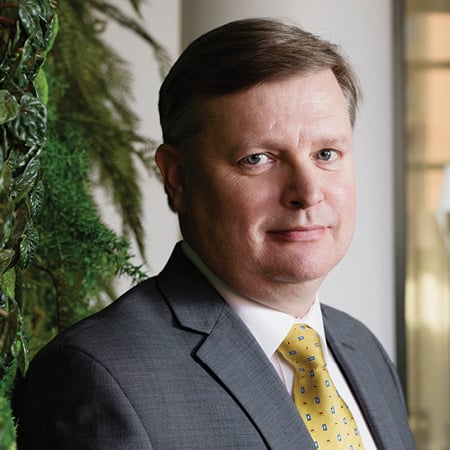During Jari Rosendal’s time with Outotec—a Finnish company providing technology to the metal and mineral processing industries—he cooperated with Kemira, was well aware of its reputation, and was instantly drawn to the idea of becoming its CEO. “I knew it was a technology house of chemistry that had really good application knowledge and was more than just a manufacturing house. It had gone through a long transformation process since its origin, as well as a lot of structural changes over the last 10 years. That phase of transformation had started to come to an end and it was time to focus on growth. All of that excited me greatly and made me decide to take the challenge,” Jari says.
“When I started leading the team of highly-skilled Kemira experts, I inherited a company whose financial position was strong and stable, and well-geared towards profitable growth. Our strategic focus is clear: we provide application know-how and chemicals that improve our customers’ product quality and resource efficiency in water-intensive industries. Sustainability aspects are deeply encoded in Kemira’s DNA through this focus.
“In the past few years, we have restructured our organisation and our way of working towards more efficient and economical settings. Now Kemira’s restructuring has been largely accomplished and we can focus on reaching our targets: €2.7 billion revenue and 15% operative EBITDA margin level in 2017.”
Kemira serves 3 core markets: pulp and paper, oil and mining; and municipal and industrial. Jari says that roughly 30% of all Kemira’s business is about treating water with its products—taking in raw water from nature and treating it to be a processed water or even drinking water, circulating water in industrial processes and treating it to be reused in those processes, and then finally treating waste waters of industries and municipalities and returning it back to nature.
“So that’s a third of what our business does for our customers’ benefit,” he says, “but 20% is keeping our customers’ processes running, keeping machines clean, pipes and tanks open, securing continuation of operation for our customers, and enabling savings in energy; for example raw material spend. 50% is about the end properties of the customers’ products such as strength of packaging board, the whiteness of paper, or durability and moisture resistance of the products and so on.



